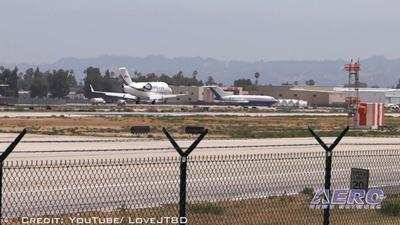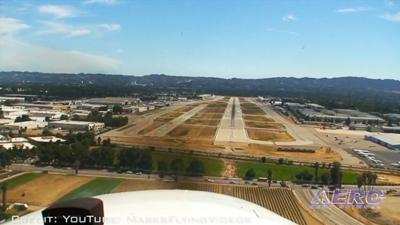Thu, Jun 30, 2022
… Or Forever Hold Your N1
Van Nuys Airport (VNY)—America’s busiest general aviation airport—announced the recipients of its 2021 Friendly Flyer Awards. The awards honor general aviation companies and corporate flight departments for their efforts to reduce the noise of their aircraft operations.

Eighteen aircraft operators received recognition plaques for complying with the airport’s mandatory noise abatement policies. Compliance, in this instance connotes at least 99-percent adherence to all noise-abatement programs and reduced nighttime jet arrivals and departures under the somewhat unimaginatively named Quieter Nights Program.
Over the past four decades, VNY has implemented a wide and aggressive gauntlet of noise abatement programs and policies. Mandatory efforts began with the establishment of a partial nighttime departure curfew in 1981, followed by a rule prohibiting the addition of Stage-II aircraft in 2002, and a noisier jet phase-out in 2009. These regulations, along with voluntary measures – such as the No Early Turn Helicopter Route and Altitude Deviation, Quiet Jet Departure and Quieter Nights Programs – depend on the ongoing compliance of both VNY-based and transient pilots.
Notwithstanding award programs, environmental theater, and institutional self-aggrandizement, overly-aggressive airport noise-abatement procedures present hazards to both aircraft and the communities over which they depart and arrive.

The business of drastically reducing engine-power shortly after takeoff—as many noise-abatement procedures prescribe—is a dangerous one. Contradictory arguments predicated upon the notion that V1 is all the departure speed an aircraft requires are sophistic, and speak to a worrying misunderstanding of rudimentary aerodynamic principles.
Noise-abatement procedures that combine partial-power climbs and low-altitude, post-departure turns are particularly hazardous—especially to aircraft departing into IMC. What’s more, noise-abatement regulations—because they are enforceable by FAA action against both pilot and air-carrier certificates—are apt to shift a pilot’s focus from keeping his aircraft safe to keeping it quiet.
More News
He Attempted To Restart The Engine Three Times. On The Third Restart Attempt, He Noticed That Flames Were Coming Out From The Right Wing Near The Fuel Cap Analysis: The pilot repor>[...]
Make Sure You NEVER Miss A New Story From Aero-News Network Do you ever feel like you never see posts from a certain person or page on Facebook or Instagram? Here’s how you c>[...]
From 2009 (YouTube Edition): Leading Air Show Performers Give Their Best Advice for Newcomers On December 6th through December 9th, the Paris Las Vegas Hotel hosted over 1,500 air >[...]
Aero Linx: NASA ASRS ASRS captures confidential reports, analyzes the resulting aviation safety data, and disseminates vital information to the aviation community. The ASRS is an i>[...]
“For our inaugural Pylon Racing Seminar in Roswell, we were thrilled to certify 60 pilots across our six closed-course pylon race classes. Not only did this year’s PRS >[...]
 NTSB Final Report: Rutan Long-EZ
NTSB Final Report: Rutan Long-EZ ANN FAQ: Turn On Post Notifications
ANN FAQ: Turn On Post Notifications Classic Aero-TV: ICAS Perspectives - Advice for New Air Show Performers
Classic Aero-TV: ICAS Perspectives - Advice for New Air Show Performers ANN's Daily Aero-Linx (06.28.25)
ANN's Daily Aero-Linx (06.28.25) Aero-News: Quote of the Day (06.28.25)
Aero-News: Quote of the Day (06.28.25)




